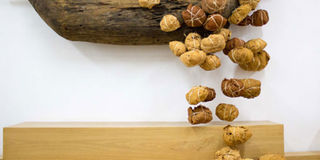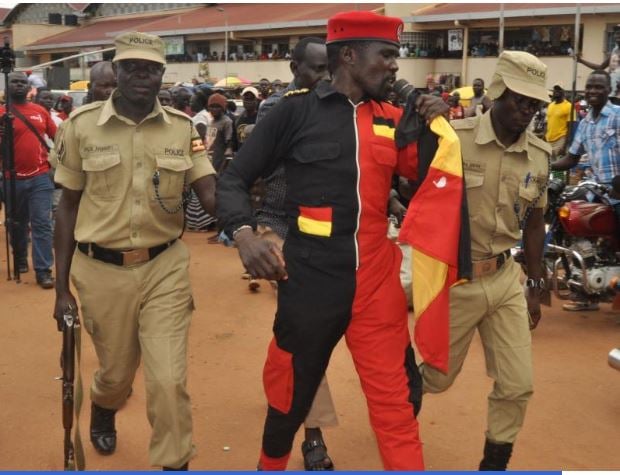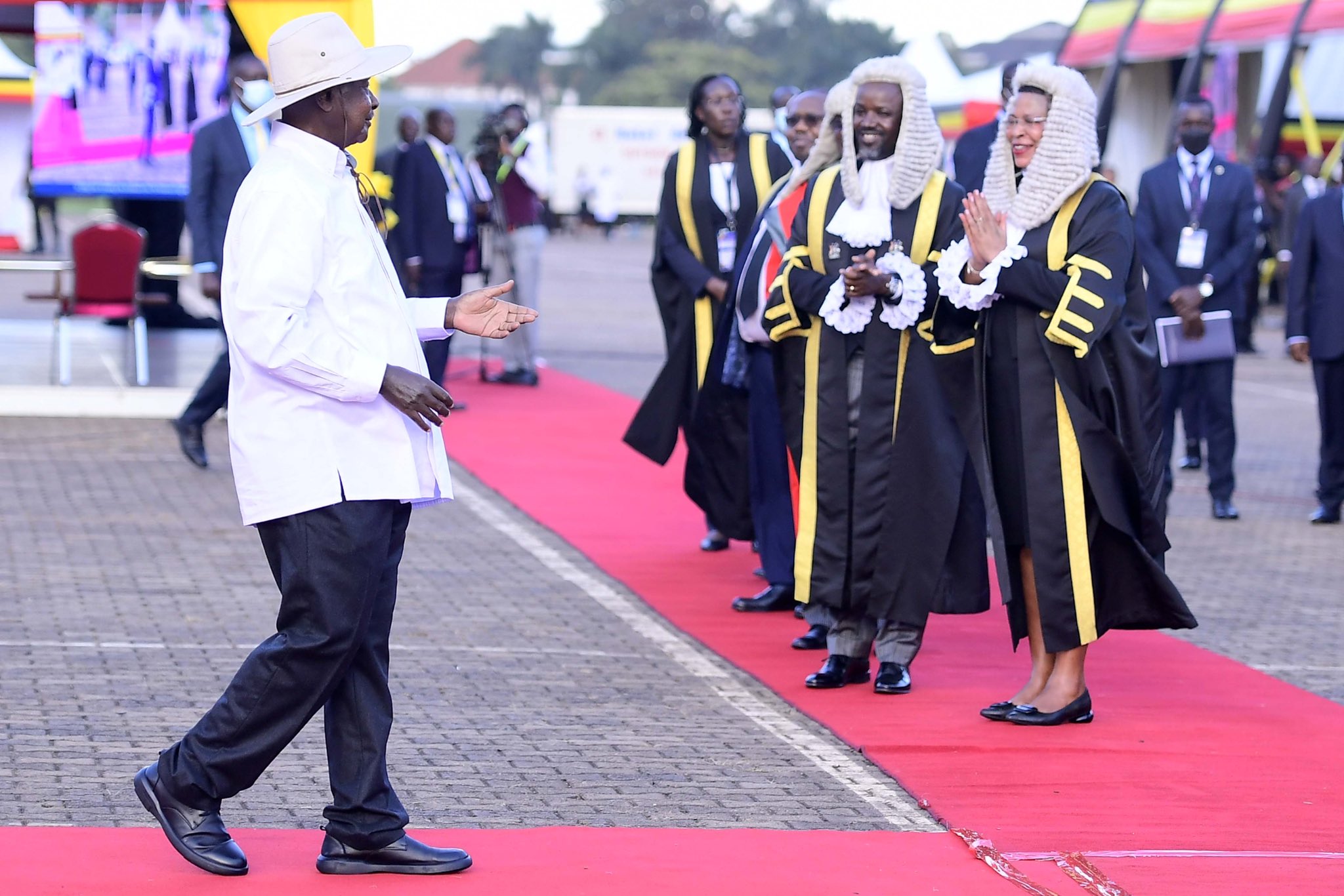Zikunta, Nightmares at Midnight

For centuries, barkcloth has been revered in Uganda for its cultural value or burial usages and funeral rights practices. In his art Zikunta exhibition at Nakumatt (Underground), Wasswa Donald August (Waswad), fused backcloth into leather and other organic material to explore expression, movement and migration.
Crafted since 2015, Zikunta has unusual installations, sculptures and drawings creating one gigantic artwork.
While the artist and curators study the works as examining current global refugee crises, development of Kampala city and its attraction of rural-urban migration; the exhibition has something culturally gothic about it.
But that goth adds to a thrilling experience while one views the art works to find own interpretation. The opening night on Saturday September 3, started just before the clock of midnight.
At the fore, two beer fermenting canoes beside large sacks stuffed with back cloth and leather hood over each other. They lead into the interior exhibition area where a half-naked man sitting on a bench in the first midsection is wearing bark cloth mask with large (probably cow) horns.
He is the marvel of many who are taking pictures as he slow dances in whining motif. At one end of the walls, are portraits of him sitting on a boda boda.
A set of wood carvings hang off another wall with small black horns peering through, there are calabashes, and large wooden boat-like structures hanging off another end.
A series of pen drawn paintings with fine finishing and patterns of human like figures are framed with wood as part of his T.M.W.A series. This acronym for The Most Weird Animals, explores habitation of humans in undesirable environments causing both fear and desire for change.
Interpretations
“I have never seen art like this...when you hear the word Zikunta and see barkcloth, there is a way you relate to it. The conversation is that Zikunta talks about nightmares, it is something scary, but through amazing art,” said vocalist Jemimah Sanyu.
Timothy Bareija thought the lot of horn is so artistic. “Five horns on his head, I see vodooism; scary and creepy,” he noted.
More pieces were embroidered with the same organic material. Dr Zunga, a bird thrust with horns and patterned leather and bark cloth as Ensiyo bukolomooni (could mean ‘your country is a gimmick’) which was knotted with sisal.
A wood sculpture Emisindde gya ba Kamyuufu, made of Mugavu and Ebony wood had six wooden pieces of with metallic horns paneling through.
Violet Nantume, curator, said the names “engage people with language, because many times our audiences are alienated because of English.”
So Waswad raises conversation with our mother tongue. Despite the bark cloth and horns dissecting a traditional cultural experience of the artistic expression, there is discourse of migration and movement.
Bob Bwana interpreted the wooden boats saying “A boat on water does not guarantee your safety. Anything can happen while you travel between locations, there could be a storm, you could hit a stone and down you go!” Indeed Natume argued that exhibition tackles movement and migration.
The choice of midnight implies how time gets suspended and loses meaning, such as in panic situations of crisis as people flee their homes to become refugees in foreign lands. All together there’s a study of multiculturalism, coexistence of diverse cultures, religion, nature, and how that is effected as people travel from place to place.
“Ugandan contemporary art is taking a new direction where artists like Waswad are going back to the roots, these symbols are familiar symbols that people can easily identify with, the horns, the beer fermenting canoe...and he’s gotten them into a theme and space someone could never have imagined” thought Peter Genza.
The question, Why would a beer canoe be hung up in a gallery? is partly purpose of this exhibition. Waswad has a theme of turning ‘trash’ into treasure.
“I want to use natural material I’m familiar with; culturally/socially. 98 percent of my work is organic. I use the environment and material around to make my art.” he said. Zikunta will run till end of September.
About Wasswa
This contemporary and multidisciplinary artist who trained at Kyambogo University was born in 1984. He draws from personal experiences like the 1980s/90s return of Asians to Uganda, which led his family to vacate Nakivubo Flats in the city center and migrate to rural Kyebando.
He produces realism and semi-abstract works, his whimsical paintings and dreamscapes are largely inspired by nature, music, humanity, architecture and fantasy. “Waswa is versatile, an artist who can surprise you, he plays too by experimenting with different things. And that’s important for creativity” said Nantume.




